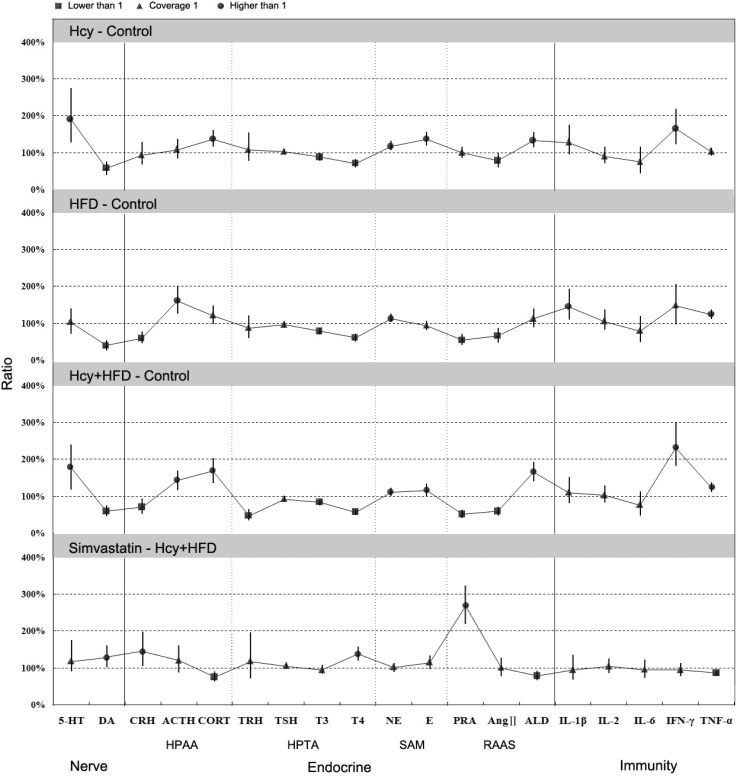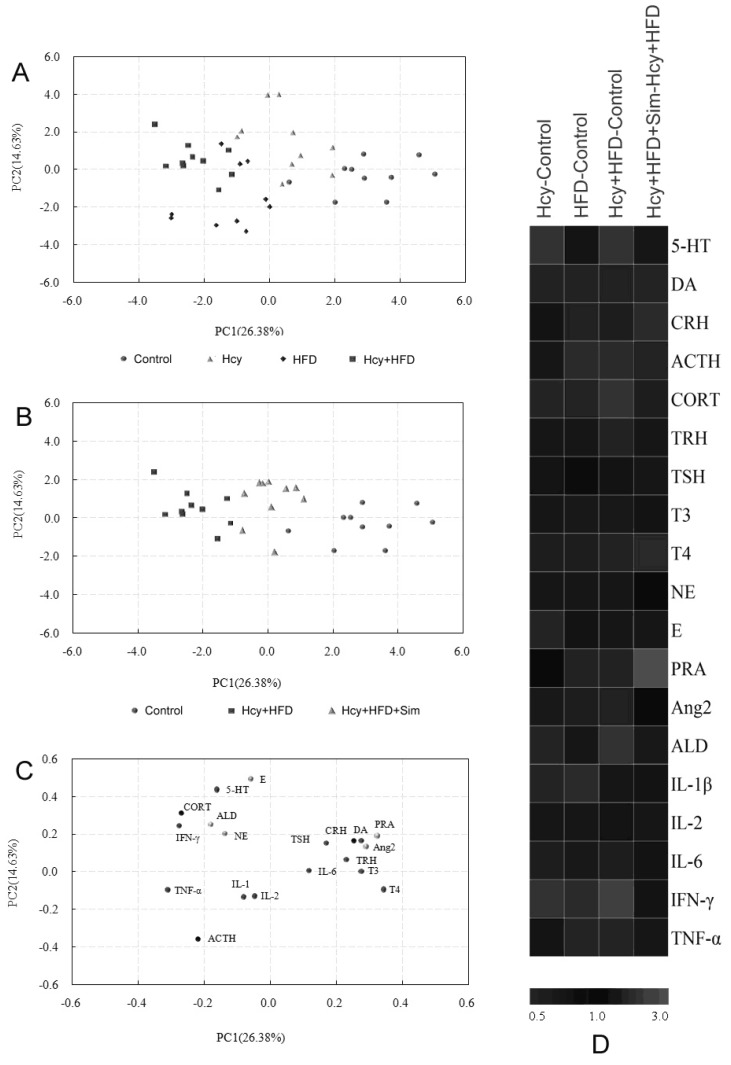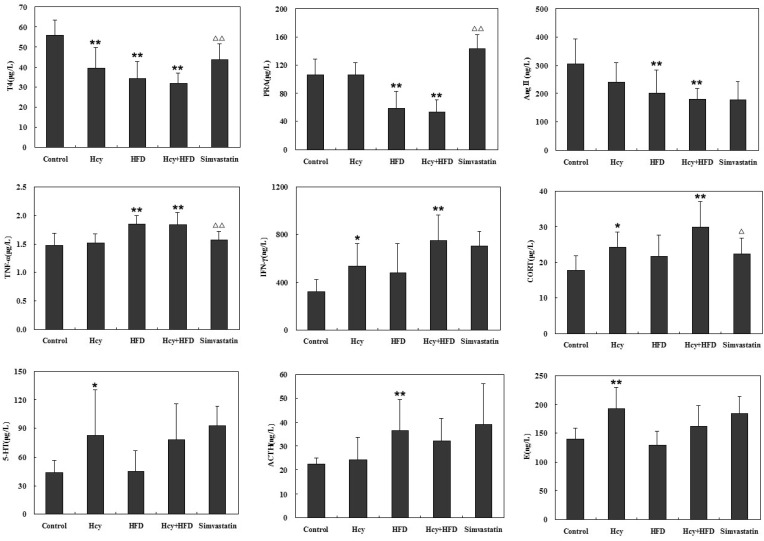1. Besedovsky H, Sorkin E. Network of immune-neuroendocrine interactions. Clin Exp Immunol. 1977; 27:1–12. PMID:
849642.
2. Ross R. The pathogenesis of atherosclerosis: a perspective for the 1990s. Nature. 1993; 362:801–809. PMID:
8479518.

3. Puranik R, Celermajer DS. Smoking and endothelial function. Prog Cardiovasc Dis. 2003; 45:443–458. PMID:
12800127.

4. Ansar S, Koska J, Reaven PD. Postprandial hyperlipidemia, endothelial dysfunction and cardiovascular risk: focus on incretins. Cardiovasc Diabetol. 2011; 10:61. PMID:
21736746.

5. Shimbo D, Muntner P, Mann D, Viera AJ, Homma S, Polak JF, Barr RG, Herrington D, Shea S. Endothelial dysfunction and the risk of hypertension: the multi-ethnic study of atherosclerosis. Hypertension. 2010; 55:1210–1216. PMID:
20308612.
6. Berger MM, Hesse C, Dehnert C, Siedler H, Kleinbongard P, Bardenheuer HJ, Kelm M, Bärtsch P, Haefeli WE. Hypoxia impairs systemic endothelial function in individuals prone to high-altitude pulmonary edema. Am J Respir Crit Care Med. 2005; 172:763–767. PMID:
15947284.

7. Koh KK. Effects of statins on vascular wall: vasomotor function, inflammation, and plaque stability. Cardiovasc Res. 2000; 47:648–657. PMID:
10974215.

8. Muller O, Bartunek J, Hamilos M, Berza CT, Mangiacapra F, Ntalianis A, Vercruysse K, Duby C, Wijns W, De Bruyne B, Heyndrickx GR, Vanderheyden M, Holz JB, Barbato E. von Willebrand factor inhibition improves endothelial function in patients with stable angina. J Cardiovasc Transl Res. 2013; 6:364–370. PMID:
23233321.

9. Chen Y, Osika W, Dangardt F, Gan LM, Strandvik B, Friberg P. High levels of soluble intercellular adhesion molecule-1, insulin resistance and saturated fatty acids are associated with endothelial dysfunction in healthy adolescents. Atherosclerosis. 2010; 211:638–642. PMID:
20362293.

10. Cho YS, Kim CH, Ha TS, Lee SJ, Ahn HY. Ginsenoside rg2 inhibits lipopolysaccharide-induced adhesion molecule expression in human umbilical vein endothelial cell. Korean J Physiol Pharmacol. 2013; 17:133–137. PMID:
23626475.

11. Durand P, Fortin LJ, Lussier-Cacan S, Davignon J, Blache D. Hyperhomocysteinemia induced by folic acid deficiency and methionine load--applications of a modified HPLC method. Clin Chim Acta. 1996; 252:83–93. PMID:
8814364.
12. Wagner J, Vitali P, Palfreyman MG, Zraika M, Huot S. Simultaneous determination of 3,4-dihydroxyphenylalanine, 5-hydroxytryptophan, dopamine, 4-hydroxy-3-methoxyphenylalanine, norepinephrine, 3,4-dihydroxyphenylacetic acid, homovanillic acid, serotonin, and 5-hydroxyindoleacetic acid in rat cerebrospinal fluid and brain by high-performance liquid chromatography with electrochemical detection. J Neurochem. 1982; 38:1241–1254. PMID:
6174695.

13. Chapin JK, Nicolelis MA. Principal component analysis of neuronal ensemble activity reveals multidimensional somatosensory representations. J Neurosci Methods. 1999; 94:121–140. PMID:
10638820.

14. Chen M, Zhao L, Jia W. Metabonomic study on the biochemical profiles of a hydrocortisone-induced animal model. J Proteome Res. 2005; 4:2391–2396. PMID:
16335992.

15. del Rey A, Welsh CJ, Schwarz MJ, Besedovsky HO. Neuroimmunomodulation in health and disease. Ann N Y Acad Sci. 2012; 1262:vii–viii. PMID:
22823446.
16. Besedovsky HO, del Rey A. Introduction: immune-neuroendocrine network. Front Horm Res. 2002; 29:1–14. PMID:
11789344.

17. Freimark D, Feinberg MS, Matezky S, Hochberg N, Shechter M. Impact of short-term intermittent intravenous dobutamine therapy on endothelial function in patients with severe chronic heart failure. Am Heart J. 2004; 148:878–882. PMID:
15523321.

18. Szabó C, Pacher P, Zsengellér Z, Vaslin A, Komjáti K, Benkö R, Chen M, Mabley JG, Kollai M. Angiotensin II-mediated endothelial dysfunction: role of poly(ADP-ribose) polymerase activation. Mol Med. 2004; 10:28–35. PMID:
15502880.

19. Cabral MD, Teixeira P, Soares D, Leite S, Salles E, Waisman M. Effects of thyroxine replacement on endothelial function and carotid artery intima-media thickness in female patients with mild subclinical hypothyroidism. Clinics (Sao Paulo). 2011; 66:1321–1328. PMID:
21915478.
20. Wilbert-Lampen U, Trapp A, Modrzik M, Fiedler B, Straube F, Plasse A. Effects of corticotropin-releasing hormone (CRH) on endothelin-1 and NO release, mediated by CRH receptor subtype R2: a potential link between stress and endothelial dysfunction? J Psychosom Res. 2006; 61:453–460. PMID:
17011352.

21. Picchi A, Gao X, Belmadani S, Potter BJ, Focardi M, Chilian WM, Zhang C. Tumor necrosis factor-alpha induces endothelial dysfunction in the prediabetic metabolic syndrome. Circ Res. 2006; 99:69–77. PMID:
16741160.
22. Lee SK, Lee JY, Joo HK, Cho EJ, Kim CS, Lee SD, Park JB, Jeon BH. Tat-mediated P66SHC transduction decreased phosphorylation of endothelial nitric oxide synthase in endothelial cells. Korean J Physiol Pharmacol. 2012; 16:199–204. PMID:
22802702.

23. Nicholson JK, Holmes E, Elliott P. The metabolome-wide association study: a new look at human disease risk factors. J Proteome Res. 2008; 7:3637–3638. PMID:
18707153.

24. Razvi S, Ingoe L, Keeka G, Oates C, McMillan C, Weaver JU. The beneficial effect of L-thyroxine on cardiovascular risk factors, endothelial function, and quality of life in subclinical hypothyroidism: randomized, crossover trial. J Clin Endocrinol Metab. 2007; 92:1715–1723. PMID:
17299073.


